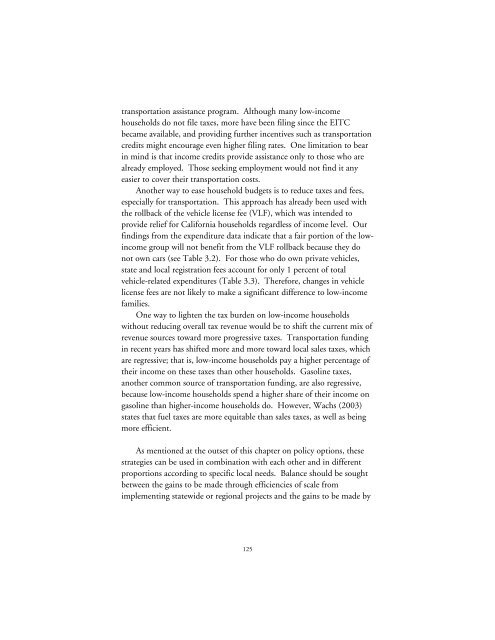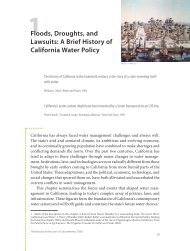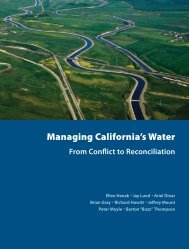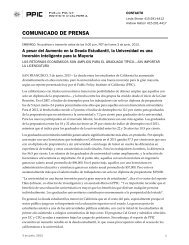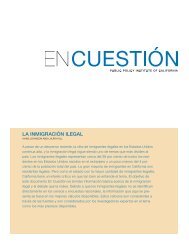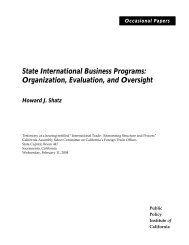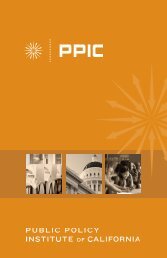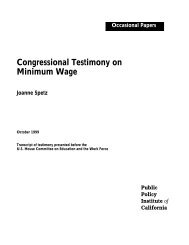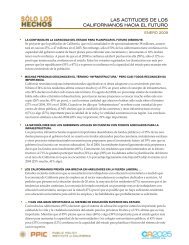Transportation Spending by Low-Income California Households ...
Transportation Spending by Low-Income California Households ...
Transportation Spending by Low-Income California Households ...
Create successful ePaper yourself
Turn your PDF publications into a flip-book with our unique Google optimized e-Paper software.
transportation assistance program. Although many low-income<br />
households do not file taxes, more have been filing since the EITC<br />
became available, and providing further incentives such as transportation<br />
credits might encourage even higher filing rates. One limitation to bear<br />
in mind is that income credits provide assistance only to those who are<br />
already employed. Those seeking employment would not find it any<br />
easier to cover their transportation costs.<br />
Another way to ease household budgets is to reduce taxes and fees,<br />
especially for transportation. This approach has already been used with<br />
the rollback of the vehicle license fee (VLF), which was intended to<br />
provide relief for <strong>California</strong> households regardless of income level. Our<br />
findings from the expenditure data indicate that a fair portion of the lowincome<br />
group will not benefit from the VLF rollback because they do<br />
not own cars (see Table 3.2). For those who do own private vehicles,<br />
state and local registration fees account for only 1 percent of total<br />
vehicle-related expenditures (Table 3.3). Therefore, changes in vehicle<br />
license fees are not likely to make a significant difference to low-income<br />
families.<br />
One way to lighten the tax burden on low-income households<br />
without reducing overall tax revenue would be to shift the current mix of<br />
revenue sources toward more progressive taxes. <strong>Transportation</strong> funding<br />
in recent years has shifted more and more toward local sales taxes, which<br />
are regressive; that is, low-income households pay a higher percentage of<br />
their income on these taxes than other households. Gasoline taxes,<br />
another common source of transportation funding, are also regressive,<br />
because low-income households spend a higher share of their income on<br />
gasoline than higher-income households do. However, Wachs (2003)<br />
states that fuel taxes are more equitable than sales taxes, as well as being<br />
more efficient.<br />
As mentioned at the outset of this chapter on policy options, these<br />
strategies can be used in combination with each other and in different<br />
proportions according to specific local needs. Balance should be sought<br />
between the gains to be made through efficiencies of scale from<br />
implementing statewide or regional projects and the gains to be made <strong>by</strong><br />
125


